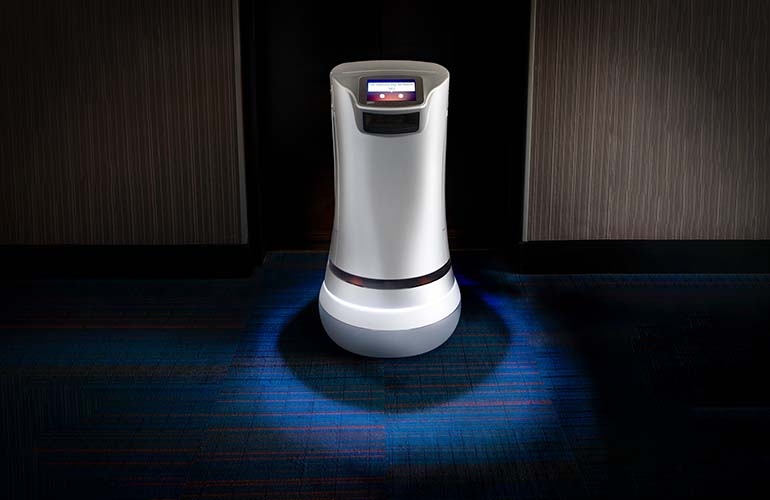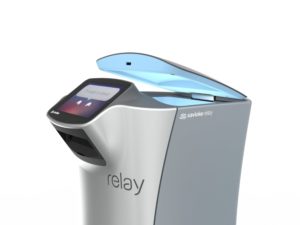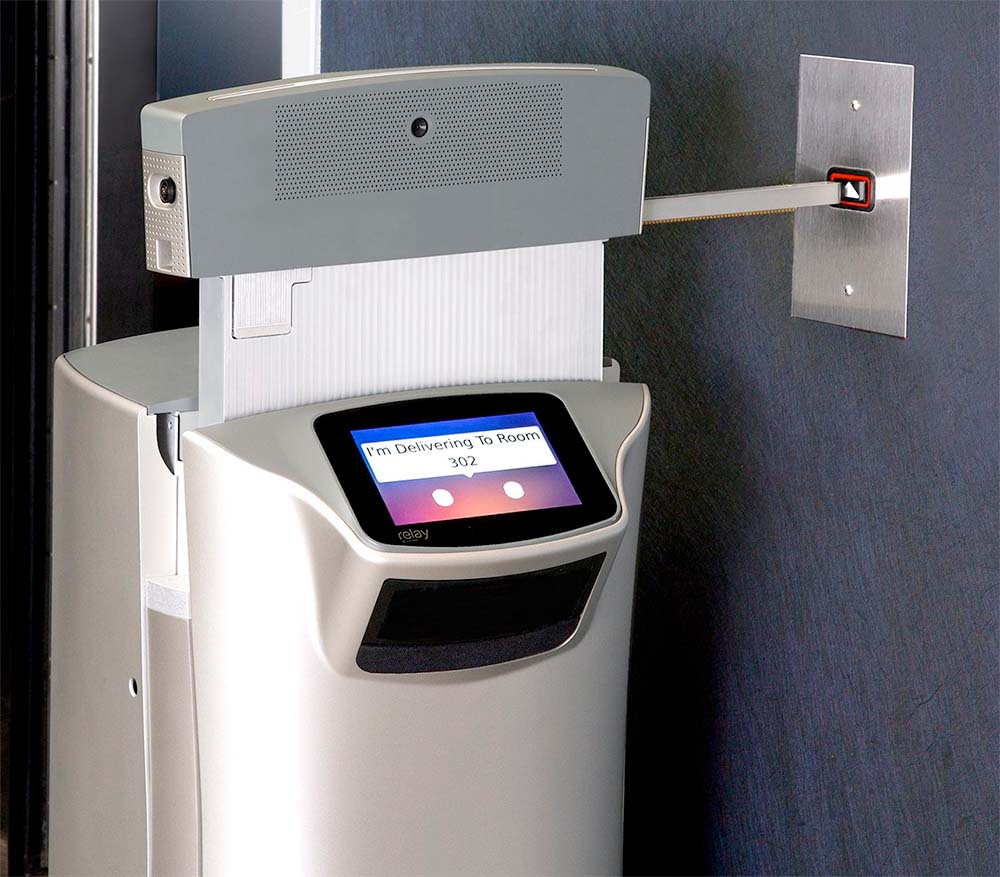|
Listen to this article
|

The Savioke Relay+ features three configurations and a mechanical elevator interface. | Image credit: Savioke
Savioke was one of the first autonomous mobile robot (AMR) providers to commercialize its solution. CEO and co-founder Steve Cousins started the company in 2013 after the famous Willow Garage team dispersed to pursue various independent endeavors. Savioke is also an innovator of the robots-as-a-service (RaaS) business model, and Cousins has been an outspoken advocate of RaaS.
With RaaS, hotel operators can purchase and deploy Relay+ and pay a basic monthly subscription fee, without the need to go through a complicated capital asset buying process.
“Service robots are becoming increasingly common in the hospitality and foodservice industries,” Cousins said. “Our safe, efficient robots have made more than 850,000 deliveries since 2014. What’s more, they can work 24/7/365, only need to be trained once, enable service staff to spend more time with customers, and heighten employee job satisfaction.”

The original Savioke Relay Robot. | Image credit: Savioke
New payload design
Relay+ is a redesign of the original Relay AMR, which offered a single, locked and controlled onboard storage container. Relay was originally designed for hotel guest room service delivery operations and featured a single onboard container.
Relay+ offers three payload configurations of the robot:
- Relay+1 provides a single, lockable bin capable of carrying packages, food delivery bags and larger items.
- Relay+4 offers 4 individually addressable drawers capable of serving to-go food.
- Relay+S provides open shelves that can be configured to a customer’s needs.
The Relay+ configuration options are factory configurable, based on the intended application. This redesign solves one of several issues that limited the addressable market for the original Relay AMR.
Relay+1 is essentially a rework of the original Relay AMR. It offers a larger onboard lockable bin that can be unlocked by the user at the delivery destination. The Relay+1 would be the solution for hotel guest delivery operations, or for hospital intralogistics deliveries of medicines and lab samples (where secure transport is required).
Relay+4 offers four locking drawers which can carry food items and cover or secure them in transit.
Relay+S offers an open shelving option for the payload. This model would be ideal for front of house restaurant applications, where the Relay+4 can deliver food from the kitchen to the patron’s table.
New mechanical elevator interface
All of the Relay+ configurations come with a new mechanically-actuated elevator button pusher that eliminates the need to communicate electronically with the elevator control unit. Savioke is positioning this feature as “quick install” capability, as the robot uses a vision camera to identify the call buttons and floor buttons and then position the robot to manually push the buttons, just like a human would.

The Savioke Relay+ includes a mechanical actuator to push an elevator call button. | Image credit: Savioke
This is a novel solution to one of the biggest hurdles to adoption of the Relay robot. It is a tremendous challenge to deploy an automatic elevator call function. The simple part is designing an electronic interface to the elevator controller as well as the software to control it all.
The dirty secret for the industry is that local laws often limit what automation can be deployed to control or override an elevator that carries humans (the public). Local fire departments have differing requirements for elevator control during an emergency and there is a liability requirement as well.
Also, each building might have a different generation of elevator controller, which means the process to install, test and validate a modified elevator controller requires permitting, inspection and a contract with the local company that is maintaining the elevator. All of this slows down the deployment, while the total cost to install an elevator controller might be more than the price of the service robot(s).
Savioke and every other service robot provider in the industry has come to realize the immensity of this deployment hurdle to control elevators in commercial buildings. As a result, this hurdle has slowed the expected adoption rates of multi-floor service robots. Savioke’s mechanically-actuated solution with the new Relay+ is a novel attempt to avoid this specific deployment issue as nearly every hotel includes multiple floors and an elevator.
“Relay+ is a game-changer in service automation,” said Bill Booth, VP Sales & Marketing at Savioke. “With its configurable payloads and quick-install capabilities, these robots can be integrated quickly into property operations and put to work quickly, generating top and bottom line benefits to customers.”
New markets for Relay+
With the original Relay, Savioke was limited primarily to hospitality/hotel applications. Relay+ now enables Savioke to easily expand into restaurant and other service industry applications while leveraging its more than 8 years of autonomous operations experience and in-field experience.






Tell Us What You Think!